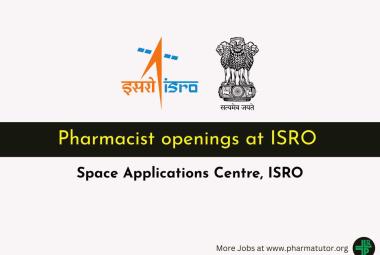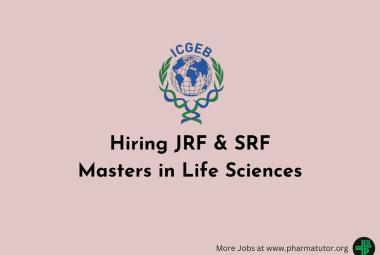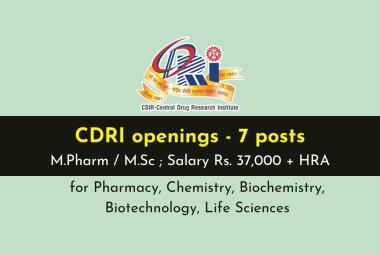ABOUT AUTHORS:
Pankaj Verma*, Tapaswi Rani Dash
M.Pharm, Pharmaceutical Technology
Asst. Prof., Pharmaceutics, School of Pharmacy and Emerging Sciences, Solan
*pankaj.pharma23@gmail.com
ABSTRACT
Salbutamol sulphate (SS), a directly acting sympathomimetic drug, is a good candidate for controlled release formulations due to its short half-life of 1.6-3 h but it is quite challenging because of its high water solubility. The purpose of this research work is to design oral controlled-release matrix tablets of Salbutamol Sulphate using hydrophilic polymers, and thus increase patient compliance by reducing its frequency of administration. Salbutamol Sulphate matrix tablets are to be designed by direct compression method using HPMC K4M CR, HPMC K100M CR and Xanthan gum as various release retarding agents. These release rate retardents are used to control the drug release up to 24 h for administration as once daily dose. The compatibility of the drug with the various excipients is to be studied using FT-IR and DSC. The effects of polymer concentration, polymer viscosity and binary mixtures of some polymers on the in-vitro drug release are to be studied. Salbutamol Sulphate matrix tablets are used for the treatment of respiratory disorders like choronic asthma,bronchitis, bronchiolitis, chronic obstructive pulmonary disease (COPD) etc. . It possibly stimulates β-2 reseptors in lungs resulting in relaxation of smooth muscles by its β-2 agonist action.
Reference Id: PHARMATUTOR-ART-1994
INTRODUCTION
For many years various pharmaceutical dosage forms like tablets, capsules, pills, suppositories, creams, ointments, liquids, aerosols and injectables have been used for the treatment of an acute disease or a chronic illness of patients. Out of the mentioned types of formulations that could be contemplated for a drug substance, the solid oral dosage form including tablets, capsules and suppositories continues to be the most important; while tablet is the most commonly and widely used oral dosage form.1 This type of drug delivery system constitutes the conventional drug-delivery system and is known to provide an immediate release of drug which may lead to many problems related to safety and efficacy and patient compliance as well. Such type of immediate release products results in relatively rapid drug absorption and immediate therapeutic action accompanying toxic or untoward effects. However, after absorption of drug from the dosage form is complete, plasma drug concentrations declines according to the drug’s pharmacokinetics profile. Eventually, plasma drug concentrations fall below the minimum effective plasma concentration (MEC), resulting in loss of therapeutic activity. Loss in therapeutic activity demands for the administration of another dosage form. So, before this point is reached another dose is usually given if a sustained therapeutic effect is desired.2
One of the best alternatives to the problems like administration of another dose is to use a dosage form that will provide sustained drug release, and therefore, maintain plasma drug concentrations, beyond what is typically seen using IR dosage forms. In present day focus of pharmaceutical industries, academic laboratories and research and development units have been on the establishment of novel drug delivery system/modified release or the controlled-release drug delivery system that could elicit the desired therapeutic response. As investigation and development of new drug add to investigation cost of a new drug.3-4
The basic rationale of a SR drug delivery system is to optimize the Biopharmaceutic, Pharmacokinetic and Pharmacodynamic properties of a drug in such of condition in the shortest possible time by using smallest quantity of drug, administered by the most suitable route.5 The novel system of drug delivery offer a means of improving the therapeutic effectiveness of incorporated drugs by providing sustained, controlled delivery and / or targeting the drug to desired site. The goal of any drug delivery system is to provide a therapeutic amount of drug to the proper site in the body to achieve promptly and then maintain the desired drug concentration.6, 7 Due to this reason there is a continuously growing interest in the pharmaceutical industry for sustained release oral drug delivery systems. There is also a high interest for design a dosage formulation that allows high drug loading, particularly for actives with high water solubility.8
As discussed, the basic rationale behind the design of SR drug delivery system may be elaborated thoroughly by understanding the shortcomings of conventional drug-delivery system.
1. Conventional drug delivery system 5, 9
Dosing intervals and half-life of a drug plays a significant role in eliciting the therapeutic response. In most of the existing conventional dosage forms the dosing interval is much shorter than the half-life of the drug resulting in a number of limitations.
i. Unless the dosing interval is relatively short, depending on biological half-life of the drug, large peaks and valleys (Figure.1) in the drug level will occur.
ii. Success by this approach is dependent on patient compliance with the dosing regimen. Lack of patient compliance is an important reason for drug therapy failure.
iii. During the early periods of dosing there may be insufficient drug to generate a desired biological response, which is a significant problem in certain diseased state.
iv. For drugs with short biological half-lives, frequent dosing is needed to maintain relatively constant therapeutic levels of drugs.
Following two approaches may be followed to overcome such situation;
i. Development of new, better and safer drugs with long half-lives and large therapeutic indices.
ii. Effective and safer use of existing drugs through concepts and techniques of controlled and targeted delivery systems.
Figure 1.1: A hypothetical plasma concentration – time profile from conventional multiple dosing and single doses of sustained and controlled delivery formulations.
2. Modified release drug delivery system3, 10
Therapeutic agents with shorter biological half-lives and frequent dosing intervals need to be delivered as MR dosage forms. In order to overcome this drug products are designed to reduce the frequency of dosing by modifying the rate of drug absorption. The term MR drug product is used to describe product that alter the time or the rate or release of the drug substance.11
Several MR products are being used for years like intramuscular/subcutaneous injection of suspensions of insoluble drug complexes, e.g. Procaine penicillin.
But with the advancement in technology novel modified release dosage forms have been developed with the desired characteristics. In contrast to conventional, IR dosage forms, MR provide either delayed release or extended release of drug.
2.1 Classification of modified release dosage form 5, 12
MR dosage form may be classified as:
2.1.1 Delayed release systems
2.1.2 Extended release systems
2.1.2.1 Sustained Release
2.1.1 Delayed release systems3
The drug is released at a later time i.e. after an hour or two of administration of the dosage form. The delayed release of a drug is achieved by coating technique, such as enteric coating, or by formulation of bi-layered tablets etc. Such preparations are designed in order to prevent side effects related to the drug presence in the stomach, protect the drug from degradation in the highly acidic pH of the gastric fluid.
2.1.2 Extended release systems 3
2.1.2.1 Sustained Release System
The two most important aspects of drug-delivery are spatial placement and temporal delivery of a drug. Spatial placement relates to the targeting a drug to a specific organ or tissue, while temporal delivery refers to controlling the rate of drug delivery to the target tissue. An appropriately designed SR drug-delivery system can be a major advance towards solving these two problems. 13-14
The U.S. Food and Drug Administration (FDA) defines “sustained release dosage form’s as one that allows a reduction in dosing frequency from that necessitated by a conventional dosage form, such as a solution or an IR dosage form”.
SR drug delivery is aimed at maintaining effective drug concentration, thereby elimination of frequent dosing, improved compliance and decreased side-effects. Thus resulting in optimized drug therapy.15
In general, the goal of a SR dosage form is to maintain therapeutic blood or tissue levels of the drug for an extended period. This is usually accomplished by attempting to obtain zero-order release from the dosage form. Zero-order release constitutes drug release from the dosage form that is independent of the amount of drug in the delivery system (i.e., a constant release rate). Sustained- release systems generally do not attain this type of release and usually try to mimic zero-order release by providing drug in a slow first-order fashion (i.e., concentration-dependent). Route and frequency of administration, type of medication and ailment being treated are amongst other factors on which compliance with drug regimen depends. Oral administration is the most common technique, but patient often forget to take their medication especially when frequent dosing is required.16
Oral, parenteral, topical, and implants dosage form products have been formulated for the purpose of prolonging absorption for both human and veterinary use. Oral SR products have gained considerable importance because of the technological advances which achieve zero order release-rate of therapeutic substance.17Generally the pharmacokinetics of a drug is controlled by its chemical nature. However decreasing the absorption rate by physical means is a useful method to sustain the drug action when it is not feasible to modify the drug compound at its molecular level.18
SR tablets are commonly taken only once or twice daily, compared with counterpart conventional forms that may have to take three or four times daily to achieve the same therapeutic effect. SR products provide an IR of drug that promptly produces the desired therapeutic effect, followed by gradual release of additional amounts of drug to maintain this effect over a predetermined period (Fig 2). The sustained plasma drug levels provide by sustained release products often times eliminates the need for night dosing, which benefits not only the patients but the care giver as well.3,10
Figure 1.2: Hypothetical drug blood levels – time coverage for a conventional solid dosage form and a multiple action product.
2.1.2.1.1 Pharmacokinetic Simulation of Sustained Release Products10
The plasma drug-concentration profiles of most SR products fit an oral one compartment model assuming first order absorption and elimination. Compared to an IR product, the sustained release product typically shows a smaller absorption rate constant, because of the slower absorption of the SR product. The time for peak concentration (tmax) is usually longer in Figure 1.3, and the peak drug concentration (Cmax) is reduced. If the drug is properly formulated, the area under the plasma drug concentration curve should be the same, parameters such as Cmax, tmax and AUC conveniently show how successfully the ER product performs in-vivo. Similarly, an excessively high Cmax is a sign of dose dumping due to in adequate formulation. The limitation of this type of analysis is that the absorption rate constant may not release to the rate of drug dissolution in vivo. If the drug strictly follows zero-order release and absorption, the model may not fit the data.3
Figure 1.3: Plasma drug concentration profiles of a SR and a regular release product.
Various other models have been used to simulate plasma drug levels of a SR product, (Wellin, 1983). The plasma drug levels from a zero-order, SR drug product may be simulated with equation (1.1);
Cp = Ds
------- ( 1 - e-kt )
VDK (1.1)
Where, Ds = maintenance dose or rate of drug release (mg/ml),
Cp = plasma drug concentration
K = overall elimination constant, and
VD = volume of distribution
In absence of loading dose, the drug level in the body rises slowly to a plateau with minimum fluctuations.
This simulation assumes that;
i. Rapid drug release occurs without delay,
ii. Perfect zero-order release and absorption of the drug takes place, and
iii. The drug is given exactly every 12 hours.
In practice, the above assumptions are not precise, and fluctuations in drug level do occur.
When a SR drug product with a loading dose (rapid release) and a zero-order maintenance dose is given, the resulting plasma drug concentrations are described by:
Where, Di = immediate – release (loading dose) and
Ds = maintenance dose (zero-order).
This expression is the sum of the oral absorption equation (first part) and the i.v infusion equation (second part). An example of a zero-order release product with loading dose is shown in Figure 1.4.
Figure 1.4: Simulated plasma drug level of a SR product with a fast release component (A) and a maintenance component (B). The solid line represents total plasma drug level due to the two components.
With most sustained release product, the patient is given more than one dose and there is no need for a built in loading dose with subsequent doses. Putting a loading dose in the body than necessary, because of the topping, effect in situations where a loading dose is necessary, the rapid – release product is used to titrate a loading dose that will bring the plasma drug level to therapeutic level.
2.1.2.1.2 Theory of sustained release19
Sustained release dosage form may contain:
i. Maintenance dose, and
ii. Loading dose
Figure 1.5: A hypothetical plasma concentration-time profile from sustained drug delivery formulation
The maintenance dose will release the drug slowly and maintain the therapeutic level for an extended period of time while, the loading dose will obtain the therapeutic level quickly after administration. The rate of release of the drug from the maintenance dosage should be zero order (independent of the concentration) if the drug at the absorption site is to remain constant.
The release of the drug from the loading dose should follows fist order kinetics.19
Sustained action curve is possible only when the drug from the dosage form is supposed for absorption into the blood, at a constant rate equal to the rate constant for elimination of the drug. From the blood, mathematically this relationship is given as;
K2B=R=KdG (1.3)
Where, K2 = Rate constant for elimination of drug from blood.
B = Quantity of drug to be maintained to the blood
R = Replacement rate
Kd = Constant relating the amount that can be absorbed under Standard volume an concentration conditions
G = Quantity of drug that the dosage form must supply (maintain) in depot.
When a fraction, f, of the drug is available because of irreversible binding or degradation, the amount available for absorption must be increased by 1/f. The value for B is usually known or can be ascertained if the drug and its effect can be measured. It is often possible to obtain a value for K2 by plotting a log of the concentration of the drug remaining in blood versus time.
When the initial dose (Dn) is estimated from the multiple dose data, the dose (Dn) is quantity needed to produce B (quantity of drug that must be maintained at receptor site). The correction for irreversible binding and / or degradation of the drug in depot (1/f) is not required when Dn is obtained from multiple dose data. Ideally, knowledge of the absorption rate constant K1, the elimination rate constant (K2) and the distributive rate constant (K12, K 21) should enable the formulation scientist to construct a curve similar to that given for a single dose. Numbers of methods for determining absorption rate constant have been reported20.
The total dose of drug, Dt, in a prolonged action preparation comprises of the normal dose, Dn, and the sustaining dose Ds i.e.
Dt = Dn +Ds (1.4)
For the system where the maintenance dose, Ds provides drug via a zero-order process the total dose is;
Dt = Dn + Kr0 Td (1.5)
Where, Kr0 is the zero-order rate constant for drug release and Td is the total time desired for sustained release corresponding to one dosing interval. If the maintenance dose begins releasing drug at time zero it will add on to that which is provided by the initial dose, thus pushing the drug level too high.
In this case a correction factor is needed to account for the added drug from the maintenances dose;
Dt = Dn - Kr0 Tp + Kr0 Td (1.6)
Where the correction factor is the amount of drug provided, during the time period t = 0 to the time of the peak drug level, Tp. Naturally, if the dosage form is constructed such that the maintenance-dose not begin to release drug until the peak blood drug level, no correction factor is needed.
If drug is released via a first-order process, no correction factor is needed.
Dt = KeCd
Dn + -------- Vd
K1r (1.7)
Where Ke is the total elimination constant for the drug, Cd is the desired blood drug level and K1r is the first-order drug release rate constant.
The last term in equation (1.4) results from the approximation.
Ds = KeCd
--------- Vd
K1r (1.8)
If the maintenance dose begins release of drug from time zero, a correction factor is required similar to the zero-order case. In this case the correct expression is; 21
Dt= Dn - DsK1rTp KeCd
-------- (1.9)
K1r
2.1.2.1.3 Advantages of sustained release drug delivery18, 22-25
Several potential advantages of SR drug delivery are as following:
1.Improvement in patient compliance.
2. Employment of lesser quantity of the drug.
3. Improvement in the patho-physiology of the diseases by:
a. Minimizations or elimination of local side effects.
b. Minimization or elimination of systemic side-effects as it minimizes drug accumulation with chronic dosing and obtains reduction in drug activity with chronic use.
4. It improves the efficiency in treatment by controlling the condition more promptly i.e. reduces fluctuation in the drug level and improves bioavailability of some drugs.
5. Economy:
a. Average cost of treatment over an extended period may be less.
b. Decrease in nursing time and hospitalization.
c. Reduce amount of drug administration.
d. Maximizing availability with a minimum dose.
e. Safety margin of high potency drugs can be increased.
f. Increased reliability of therapy.
vi. Improved therapy: Undesirable side-effects caused by excessively high peak drug concentration after administration of conventional dosage forms is reduced.
2.1.2.1.4 Disadvantages of sustained release drug delivery system10, 17-18, 22 -25.
Some of the disadvantages of SR products are as follows:
i. The remaining matrix must be removed after the drug has been released.
ii. Greater dependence on GI residence time of dosage form.
iii. Increased potential for first-pass metabolism.
iv. Delay in onset of drug action.
v. Release rates are affected by food and the rate transit through the gut.
vi. Dose Dumping: Dose dumping is a phenomenon where by relatively large doge in a controlled release formulation is rapidly release, introducing potential toxic quantities of the drug into the systemic circulation.
vii. Less flexibility in acute dose adjustment: In case of SR dosage forms, controlled release property may get lost, if dosage form is fractured.
viii. Patient variation: The time period require for absorption of drug release from the dosage form may vary among individuals. Co-administration of other drugs, presence or absence of food and residence time in GIT is different among patients. This also gives rise to variation in clinical response among the patient.
ix. Usually the amount of drug in a S.R. dosage form is 3-4 times and if a dosage form is used improperly e.g. by chewing instead of swallowing, the patient would receive an over dose. Hence only such drugs which process a substantial margin of safety can be presented in S.R. form.
x. In case of accidental failure of the product effective antidote may be difficult to employ.
xi. Drugs having long biological half life are not suitable for presentation in SR form, eg. digitoxin.
xii. Problem in case of elderly people: MR products should never be crushed or chewed as the slow-release characteristics may be lost and toxicity may result. This particularly important in patients unable to swallow whole tablets, a problem commonly affecting the elderly. The larger size of extended-release products may cause difficulties in ingestion to transit through the gut.
2.1.2.2 Controlled release formulation
An ideal controlled drug delivery system is the one, which delivers the drugs at a predetermined rate, locally or systemically, for a specific period of time. The controlled release systems are designed to deliver at a zero-order rate, constant supply of the active ingredient by continuously releasing, for a certain period of time, an amount of the drug equivalent to the eliminated by the body.
Oral route has been the most popular and successfully used for controlled delivery of drug because of convenience and ease of administration, greater flexibility in dosage form design( possible because of versatility of GI anatomy and physiology) and ease of production and low cost of such a system.26
The controlled release systems for oral use are mostly solids and based on dissolution, diffusion or a combination of both mechanisms in the control of release rate of drug.
2.1.2.2.1 Diffusional System 27-28
In diffusional systems release rate of drug is determined by its diffusion through a water insoluble polymer. There are basically two types of diffusion devices: reservoir devices and matrix devices.
2.1.2.2.2 Reservoir devices
In these systems a water insoluble polymeric material encases core of drug as described by the figure 1.6. Drug will partition into the membrane and exchange with the fluid surrounding the particle or tablet. The nature of the membrane determines the rate of release of drug from the system.
The release of drug from a reservoir device is governed, by Fick’s first law of diffusion.
The equation may be given as;
J = dc
- D ------ (1.10)
dX
Where, J = Flux of drug across a membrane (amount/area-time)
D = Diffusion coefficient
= Change in concentration C relative to distance X in the membrane.
Figure 1.6: Reservoir diffusion devices, Cm(o) and Cm(l)represent concentration of drug at the inside surfaces of the membrane and Cm & Clrepresent concentrations in the adjacent regions.
2.1.2.2.3 Matrix devices
In matrix devices drug is dispersed homogeneously throughout an insoluble polymeric matrix as represented in following figure 1.7;
Figure 1.7: Diffusion control of drug release by solid drug dispersed in an insoluble polymeric matrix.
In this model, drug in the outside layer exposed to the bathing solution is dissolved first and then diffuse out of the matrix. This process continues with the interface between the bathing solution and the solid drug moving toward the interior.
Derivation of the mathematical model to describe this system involves the following assumptions.28-29
i. A pseudo-steady state is maintained during drug release.
ii. The diameter of the drug particles is less than the average distance of drug diffusion through the matrix.
iii. The bathing solution provides sink conditions at all times, and
iv. The diffusion coefficient of drug in the matrix remains constant.
The next equations, which describe the rate of release of drugs dispersed in an inert matrix system, have been derived by Higuchi. The following equation can be written based on Figure 1.4;
dM Cs
dM = ------- = C0 dh - -----
dh 2 (1.11)
Where, dM = Change in the amount of drug released per unit area
dh = Change in the thickness of the zone of matrix that has been depleted of drug
C0 = Total amount of drug in a unit volume of the matrix
Cs = Saturated concentration of the drug within the matrix.
From diffusion theory;
DmCs
dM = ------- dt
h (1.12)
Where, Dm is the diffusion coefficient in the matrix, Equating Eqs.1.11 & 1.12, integrating, and solving for h gives;
M = [Cs. Dm (2Co-Cs) t] 1/2 (1.13)
When the amount of drug is in excess of the saturation concentration, that is, Co>>Cs
M = (2CsDmCot)1/2 (1.14)
Which indicates that among the drug released is a function of the square root of time.
In a similar manner, the drug release from a porous or granular matrix can be described by;
M = [ DsCa P/T (2C0 - pCa)t]1/2 (1.15)
Where, P = Porosity of the matrix,
Ca = Solubility of the drug in the release medium
T = Tortuosity
Ds = Diffusion coefficient in the release medium.
This system is slightly different from the previous matrix system in that the drug is able to pass out of the matrix through fluid-filled channels and does not pass through the polymer directly.
For purposes of data treatment, Eqn. (1.14) or Eqn. (1.15) can be reduced to;
M = kt1/2 (1.16)
Where “k” is a constant, so that plot of amount of drug released versus the square root of time will be linear, if the release of drug from the matrix is diffusion controlled.
If this is the case, then by the Higuchi model, one may control the release of drug from a homogeneous matrix system by varying the following parameters;
i. Initial concentration of drug in the matrix
ii. Porosity
iii. Tortuosity
iv. Polymer system forming the matrix, and
v. Solubility of the drug
2.1.2.2.3.1 Types of matrix tablets30-33, 36
On the basis of type of polymer/release rate retardant used matrix tablets may be divided into following types;
2.1.2.2.3.1.1 Hydrophilic matrix tablets
Hydrophilic matrix systems are presently one of the most interesting drug delivery system. They are most widely used to control the release rate of drugs because of their flexibility to obtain a desirable drug release profile, cost effectiveness, and broad regulatory acceptance. Hydrophilic matrix tablets may be defined as “Homogeneous dispersion of drug molecules within a skeleton of hydrophilic polymers, such as cellulose derivatives, sodium alginate, xanthan gum, polyethylene oxide, or carbopol among others, that swells upon contact with water”. These systems are called swellable-controlled release systems. Apart from swelling and diffusion mechanisms polymer dissolution is another important mechanism that can modulate the drug delivery rate.
Swelling or dissolution can be the predominant factors for a specific type of polymers, in most cases drug release kinetics is a result of a combination of these two mechanisms. The release rate observed is possibly the zero-order release. Most commercial hydrophilic matrices are obtained by compression. Thus, the basic operations involved in the preparation of the matrices are the same as those used to prepare conventional tablets, such as mixing and compressing the components. Granulation prior to mixing and the coating of matrix tablets are complementary operations widely used to manufacture matrix tablets. As well as the drug and the release-limiting polymer, other excipients are usually added as diluents, lubricants and anti-adhearents.
The dissolution curve of drug release from a hydrophilic matrix shows a typical time-dependent profile. The release of a dissolved drug inherently follows near first order diffusion either an initially high release rate, due to the dissolution of the drug present at the surface of the matrix followed by a rapidly declining drug release rate.
The enhanced release rate observed at the beginning for the short time of release process is known as “burst effect”. After this burst effect, hydration and consequent swelling and/or erosion of related polymer occur. These phenomenon control the release process but with time, the diffusion path length increases and saturation effect is attained, resulting in a progressively slow release rate during the end of dissolution span.
Figure1.8: Schematic diagram showing the burst effect in a zero-order drug delivery system
In many controlled release formulations immediately after placement in dissolution medium, an initial large bolus of drug is released before the release rate reaches a stable profile. This phenomenon is referred to as ‘burst release’. Causes of burst release are processing conditions, surface characteristics of host material, sample geometry, host and drug interaction (surface adsorption), morphology and porous structure of dry material.
2.1.2.2.3.1.2 Hydrophobic matrix tablets34-35
The concept of using hydrophobic or inert materials as matrix materials was first introduced in 1959. In this method of obtaining sustained release from an oral dosage form, drug is mixed with an inert or hydrophobic polymer and then compressed into a tablet. SR is produced due to the fact that the dissolving drug has diffused through a network of channels that exist between compacted polymer particles.
This is the only system where the use of polymer is not essential to provide controlled drug release, although insoluble polymers have been used. The primary rate-controlling components of hydrophobic matrix are water in soluble in nature. Examples of materials that have been used as inert or hydrophobic matrices include waxes, glycerides, polyethylene, polyvinyl chloride, ethyl cellulose and acrylate polymers and their copolymers. The rate-controlling step in these formulations is liquid penetration into the matrix. The possible mechanism of release of drug in such type of tablets is diffusion. Such types of matrix tablets become inert in the presence of water and gastrointestinal fluid.
The presence of insoluble ingredient in the formulations helps to maintain the physical dimension of hydrophobic matrix during drug release. To modulate drug release, it may be necessary to incorporate soluble ingredients such as lactose into formulation. As such, diffusion of active ingredient from the system is the release mechanism, and the corresponding release characteristic can be described by Higuchi equation known as square root of time release kinetics. Hydrophobic matrix systems generally are not suitable for insoluble drug because the concentration gradient is too low to render adequate drug release. As such, depending on actual ingredient properties or formulation design, incomplete drug release within the gastrointestinal transit time is a potential lrisk in case of hydrophilic matrix tablets.
2.1.2.2.4 Bimodal Release37-39
In some systems there is anomalous release of the active ingredient. In these systems release is primarily by diffusion. Sometimes the ER polymer may become hydrated and begin to dissolve leading to release upon erosion. These systems are complex and difficult to mathematically model since the diffusional path length undergoes change due to the polymer dissolution.
A series of transport phenomena are involved in the release of a drug from a swellable, diffusion/erodible matrix:
i. Initially, there are steep water concentration gradients at the polymer/water interface, resulting in absorption of water into the matrix.
ii. Due to the absorption of water, the polymer swells, resulting in dramatic changes of drug and polymer concentration, increasing the dimensions of the system and increasing macromolecular mobility.
iii. Upon contact with water the drug dissolves and diffuses out of the device.
iv. With increasing water content, the diffusion coefficient of the drug increase substantially.
v. In the case of a poorly water-soluble drug, dissolved and undissolved drug coexist within the polymer matrix.
vi. Finally, the polymer itself dissolves.
The penetration of the medium into the matrix is accompanied by the formation of a series of fronts Fig. 1.9 which later disappear along the process of matrix dissolution.
The following fronts have been defined with regard to anomalous release systems:
1) The swelling front: With the entry of water into the matrix, the polymer passes from thecrystalline state to a hydrated or gelified state. This front is thus seen separating the crystalline state (glassy region) from the hydrated or gelified one (rubbery region).
– The rubbery zone is characterized by being the one into which more solvent has entered and hence the vitreous transition temperature (Tg) at 37o C of the polymer is lower than the experimental temperature.
– The glassy region is the one into which the least solvent has entered and hence its Tg is higher than the experimental temperature.
2) The erosion front or dissolution front: This separates the gelified zone from the matrix of the solvent.
3) Diffusion front (solid drug–drug solution boundary): This is located between the swelling and erosion fronts and it separates the zone of the gelified matrix containing the drug dissolved in the medium from the zone of the matrix containing the un-dissolved solid drug.
A fourth front movement has been recently described by Ferrero et al.: the penetration front (dry glassy / glassy hydrated polymer interface), showing that the solvent concentration is never zero beyond the glassy/rubbery interface.
Thus, the mechanisms by which drugs are released are complex and involve different processes: the entry of the aqueous medium into the matrix, swelling of the matrix, dissolution of the drug in the medium, diffusion of the drug through the gel layer, and erosion of the swelled matrix. Unlike systems formed by non-biodegradable polymers, in which release is controlled by diffusion of the drug through the gel layer, obtaining first-order release kinetics, in systems comprising biodegradable polymers – in particular hydrophilic systems – the control of drug release is exerted by the entry of water into the matrix system. This entry of water produces the swelling of the polymer or the matrix dissolution.
Figure 1.9: Scheme of the hydrophilic matrix after entry of the dissolution medium.
With regard to swelling matrix systems, alternate models have been proposed to describe the diffusion, swelling and dissolution processes occurring with into the system and these phenomena lead to drug release. The gel strength is important in the matrix performance and is controlled by the concentration, viscosity and chemical structure of the rubbery polymer. This restricts the suitability of the hydrophilic polymers for preparation of swellable matrices. Polymers such as carboxymethylcellulose, hydroxypropylcellulose or tragacanth gums do not form the gel layer quickly. Consequently, they are not recommended as excipients to be used alone in swellable matrices.
In 1985, Peppa’s introduced a semi-empirical equation describing the drug release behaviour from anomalous-release, hydrophilic matrix systems;
Q = k. t n (1.17)
Where, Q = Fraction of drug release in time (t)
t = Time
k = Rate constant (incorporates characteristics of polymer system and drug)
n = Diffusional exponent
In order to describe relaxational transport, then modified eqn. (1.9) in order to account for relaxational transport:
Q = k1 . tn + k2 . t 2 n (1.18)
Where, k1 = Fickian diffusion constant
k2 = Relaxational mechanism constant
If the surface area of the system is fixed, which is unlikely, the value of n should be 0.5 and equation (1.17) is transformed to:
Q = k1. t0.5 + k2.t (1.19)
The first term of this equation accounts for diffusional phenomena, while the second term of this equation accounts for polymer erosion. The value of n is indicative of the drug release mechanism.
2.1.2.2.5 Swelling characteristics of polymer40
The Peppa’s plot is useful to determine whether the drug release from the matrix is controlled by swelling of the polymer or not. The Peppa’s equation is
log Q= log (kt½) (1.20)
log Q= log k + 0.5 log t (1.21)
Where, Q = amount of drug release in time t per unit area
k = release constant.
If the slope of a plot of log Q Vs log t is exactly 0.5, then the drug release occurs by perfect diffusion obeying Higuchi’s and Fick’s law. If it is in the range of 0.5 – 1, then the mechanism of release is diffusion and rate of diffusion is controlled by swelling of polymer. If it is bellow 0.5, then there is no swelling of matrix occur.
2.1.2.2.6 Drug release mechanism from matrices 41
Various types of drug release mechanisms from matrices depend on water penetration in the matrix, hydration and swelling, diffusion of the dissolved drug and erosion of the gelatinous layer. Release mechanism of a drug would largely depend on the dosage form selected, pH, and nature of the drug and of course, the polymer used.
2.1.2.2.6.1 Zero order kinetics
Drug dissolution from pharmaceutical dosage form that do not disaggregate and release the drug slowly (assuming that area does not change and no equilibrium conditions are obtained) can be represented by the following equation;
W0 –Wt = Kt (1.22)
Where, W0 = Initial amount of drug in the pharmaceutical dosage form
Wt = Amount of drug in the pharmaceutical dosage form
t = Time
K = Proportionality constant
The pharmaceutical dosage form following this profile, release the same amount of drug per unit time and can be explained by following equation;
Qt = Q0 + K0t (1.23)
Where, Qt = Drug dissolved in time t
Q0 = Initial amount of drug in solution
K0 = Zero order rate constant
2.1.2.2.6.2 First order kinetics
The application of this model to drug dissolution studies was first proposed by Gibaldi and Feldman (1967) and later by Wagner. The dissolution phenomena imply a surface action, as can be seen by Noyes – Whitney equation;
dc
----- = KS (Cs-C)
dt (1.24)
Where, C = Concentration of solute in time t,
CS = Solubility in equilibrium at experience temperature.
k =First order proportionality constant
Hixson and Crowell adapted the above equation as;









